Design Flow Assistant
Interactive guide to help you create a development strategy.

End-to-End Acceleration for Embedded AI


AMD programmable logic fuels differentiation—empowering designers to connect to any type of sensor and build low-latency proprietary processing functions.
Next-generation AI Engines feature expanded data type support and offer up to 3X TOPS/watt than the previous generation AI Engine architecture.1
Enhanced processing system offers up to 10X more scalar compute than first-generation Versal devices2 for complex decision making and similar workloads.
Accelerate all three phases of compute
Versal AI Edge Series Gen 2 adaptive SoCs support flexible, real-time preprocessing, efficient AI inference, and high-performance postprocessing—reducing area and complexity.
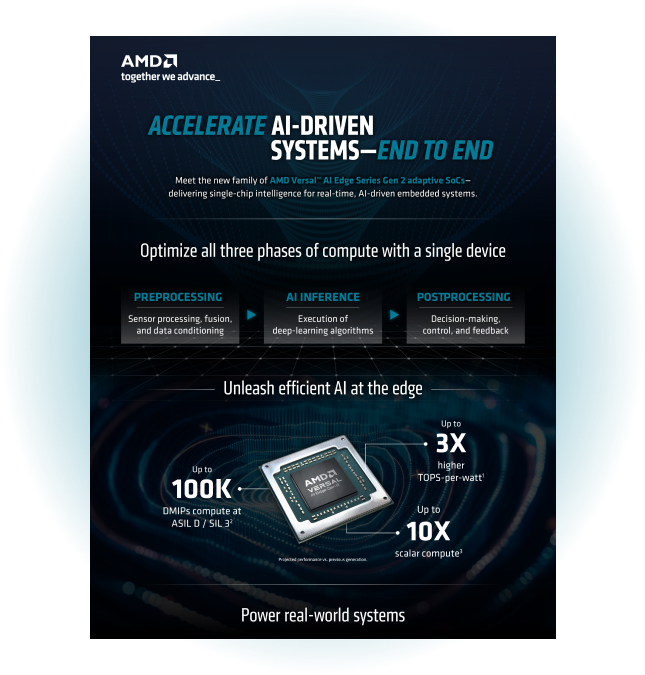
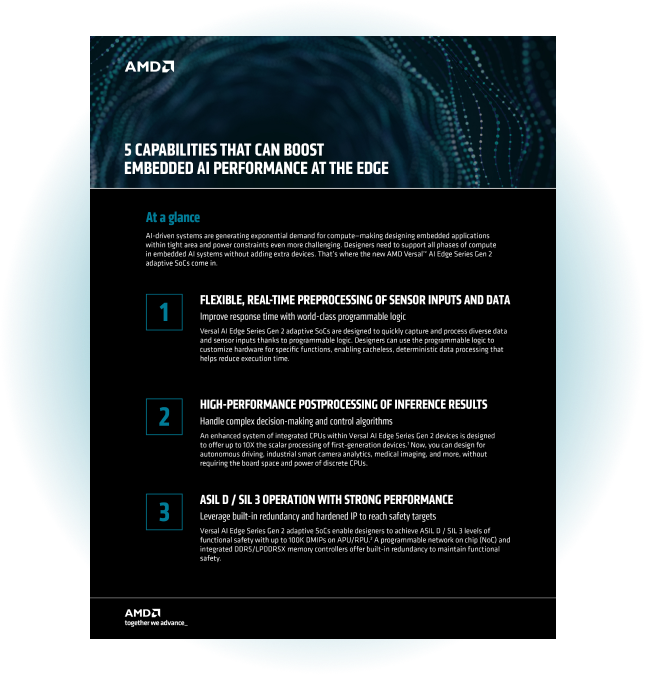
Tap into the versatility of heterogeneous computing
With world-class programmable logic, integrated CPUs, advanced safety, security features, and more—Versal AI Edge Series Gen 2 adaptive SoCs go beyond inference.
Enhancing the production-proven Versal architecture, Versal AI Edge Series Gen 2 adaptive SoCs combine world-class Versal programmable logic with a new high-performance processing system and next-generation AI Engines—all in a single device and built on a foundation of enhanced safety and security.
See the data sheet overview for the available feature combinations per device/package.
Up to 8x Arm® Cortex®-A78AE application processors and up to 10x Cortex-R52 real-time processors designed to offer over 200k DMIPs of total compute with support for USB 3.2, DisplayPort™ 1.4, 10 GbE, PCIe® Gen5, and additional peripherals.
World-class Versal programmable logic and new high-performance X5IO with MIPI C-PHY support provide flexibility, real-time processing, and future adaptability.
New AIE-ML v2 tiles designed to deliver 2X compute/tile compared to previous generation,3 robust energy efficiency, and new native data types—including MX6 & MX9 designed to boost throughput & performance/watt.
Upgraded safety and security features include ASIL D / SIL 3 operation of the processing system, NoC, memory controllers, a new application security unit, and other security enhancements over the previous generation. The processing system offers up to 100k DMIPs of compute for ASIL D / SIL 3 applications.4
New hard image signal processor (ISP) IP accelerates image processing and enhanced video codec unit (VCU) tiles support HEVC & AVC 4K60 4:4:4, 12-bit encode & decode.5
Hard DDR memory controllers support DDR5-6400 and LPDDR5X 8533 with new inline crypto functionality—offering up to 170 GB/s memory bandwidth.
An Arm Mali™-G78AE GPU enables display/HMI applications at up to 4K60 resolutions with up to 268 GFLOPs of compute.6 Read the white paper for additional information.
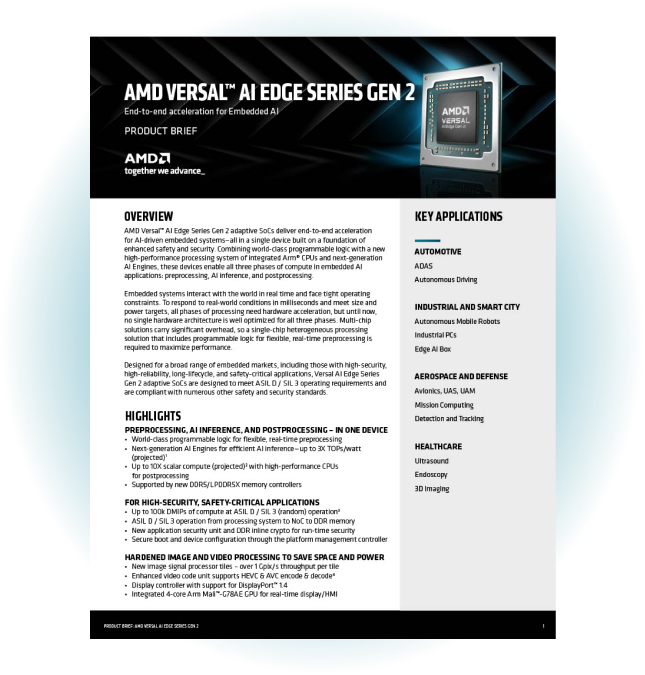
Learn how Versal AI Edge Series Gen 2 adaptive SoCs deliver end-to-end acceleration for AI-driven embedded systems—all in a single device built on a foundation of enhanced safety and security.
With the rise of electric vehicles, autonomous vehicle technology, and innovations in safety and infotainment systems — many driven by AI, the automotive industry is experiencing massive change – and opportunity. In this eBook, you will learn about the current trends driving this change, as well as the technical and manufacturing challenges that these trends bring.
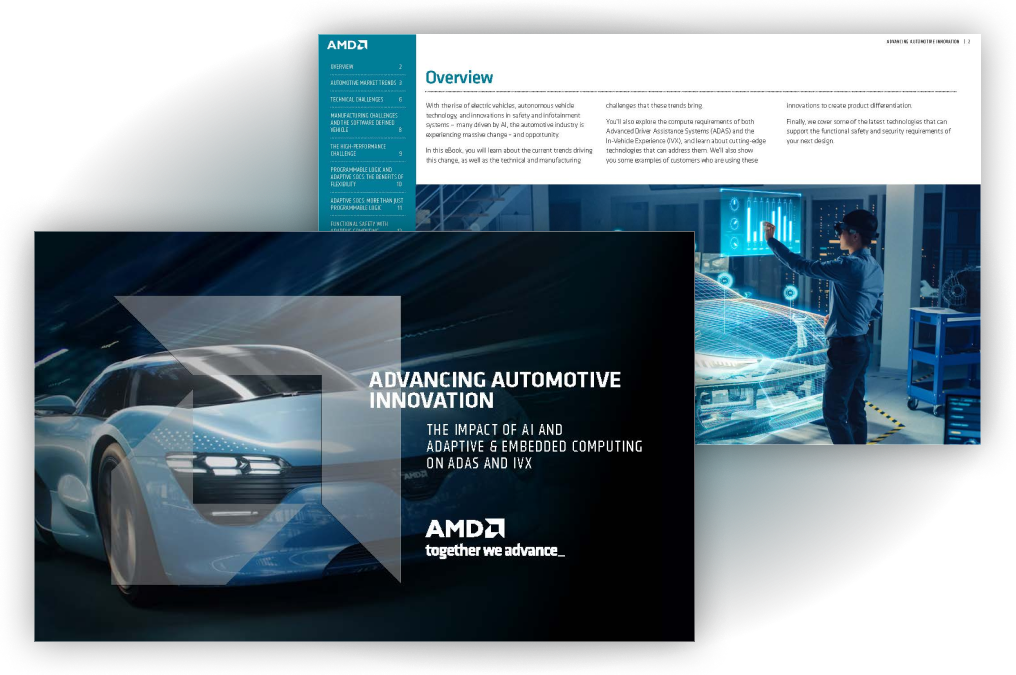


Designed to meet the central compute requirements for Automotive Advanced Driver-Assistance Systems (ADAS) and Automated Driving (AD), Versal AI Edge Series Gen 2 adaptive SoCs include an enhanced AI Engine, offering higher efficiency and up to 3X performance per watt compared to the previous generation.1 The heterogeneous architecture of the AI Edge Series Gen 2 devices is ideal for multi-sensor vision perception systems requiring sensor fusion and real-time decision making.
High productivity is one of the primary goals of industrial automation, robotics, and machine vision applications. Versal AI Edge Series Gen 2 adaptive SoCs have been optimized to handle these processing-intensive workloads efficiently while addressing key considerations such as functional safety, latency, determinism, sensor interfacing, AI inferencing, power, real-time control, and networking.
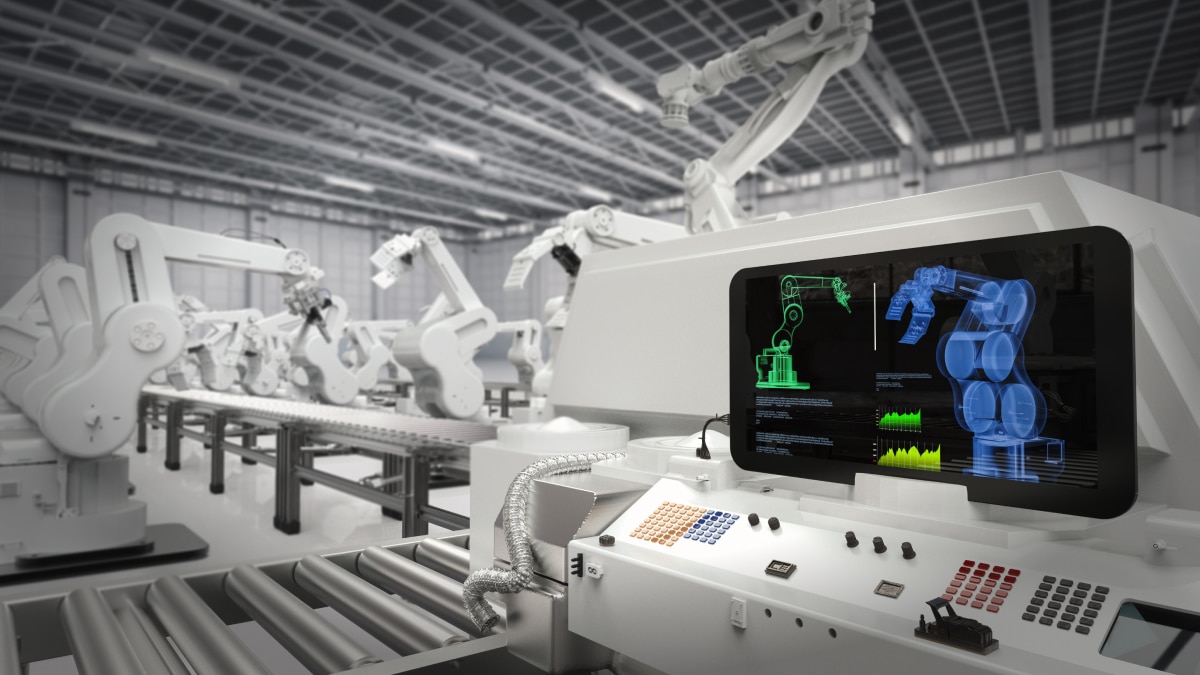

Versal AI Edge Series Gen 2 is suitable for a multitude of A&D applications from autonomous systems to those that use AI inferencing in mission computing, onboard networking, software defined radio, and imaging, to the most advanced detection and tracking, as well as sensor fusion systems.
High-quality images, scan depth, AI processing, and displaying real-time results are important attributes for today's medical diagnostic imaging equipment. A system-on-chip family like the Versal AI Edge Series Gen 2 is ideal for medical imaging equipment due to its targeted compute and memory performance, integrated hardware functional accelerators, next-generation high-speed connectivity, and its rich software development environment.


The importance of simultaneously considering power, latency, and AI performance has never been greater with the rise of real-time Edge AI applications and demanding systems. The Versal AI Edge Series Gen 2 is designed to boost AI performance and optimize latency through its AI Engine tiles and video codec unit. It also offers adaptable I/O interfaces and reference designs, simplifying real-time data synchronization and streamlining the design process.
| 2VE3304 | 2VE3358 | 2VE3504 | 2VE3558 | 2VE3804 | 2VE3858 | |
|---|---|---|---|---|---|---|
| INT8 TOPS (Dense) | 31 | 31 | 123 | 123 | 184 | 184 |
| INT8 TOPS (Max Sparsity) | 61 | 61 | 246 | 246 | 369 | 369 |
| MX6 TOPS (Dense) | 61 | 61 | 246 | 246 | 369 | 369 |
| 2VE3304 | 2VE3358 | 2VE3504 | 2VE3558 | 2VE3804 | 2VE3858 | |
|---|---|---|---|---|---|---|
| AIE-ML v2 Tiles | 24 | 24 | 96 | 96 | 144 | 144 |
| 2VE3304 | 2VE3358 | 2VE3504 | 2VE3558 | 2VE3804 | 2VE3858 | |
|---|---|---|---|---|---|---|
| Application Cores / Real-Time Cores | 4 / 4 | 8 / 10 | 4 / 4 | 8 / 10 | 4 / 4 | 8 / 10 |
| Application Processor | Arm Cortex-A78AE, 64 KB I w/parity & D w/ECC L1 Cache, 512 KB L2 Cache, 1 MB L3 Cache (per 2-core cluster), CMN600 w/4 MB Last-Level Cache (shared) | |||||
| Real-Time Processor | Arm Cortex-R52, 32 KB L1 Cache w/ECC, 128 KB TCM w/ECC | |||||
| Memory | 2 MB On-Chip Memory w/ECC | |||||
| High-Speed Connectivity | PCI Express® Gen5x4, USB 3.2, DisplayPort™ 1.4, 10G Ethernet, 1G Ethernet, UFS 3.1 | |||||
| General Connectivity | CAN/CAN-FD, SPI, UART, USB 2.0, I2C/I3C, GPIO | |||||
| 2VE3304 | 2VE3358 | 2VE3504 | 2VE3558 | 2VE3804 | 2VE3858 | |
|---|---|---|---|---|---|---|
| System Logic Cells | 206,920 | 206,920 | 492,188 | 492,188 | 1,188,040 | 1,188,040 |
| LUTs | 94,592 | 94,592 | 225,000 | 225,000 | 543,104 | 543,104 |
| DSP Engines | 184 | 184 | 700 | 700 | 2,064 | 2,064 |
| 2VE3304 | 2VE3358 | 2VE3504 | 2VE3558 | 2VE3804 | 2VE3858 | |
|---|---|---|---|---|---|---|
| Total PL Memory (Mb) | 21.1 | 21.1 | 23.9 | 23.9 | 97.0 | 97.0 |
| Max. Memory Bandwidth (LPDDR5X) | 102 GB/s | 102 GB/s | 136 GB/s | 136 GB/s | 170 GB/s | 170 GB/s |
| 100G Multirate Ethernet MAC | 1 | 1 | 1 | 1 | 3 | 3 |
| PL PCIe (Gen5x4) | 1 | 1 | 3 | 3 | 4 | 4 |
| High-Performance I/O | 260 | 260 | 384 | 384 | 512 | 512 |
| GTYP Transceivers (PL-Only) | 4 | 4 | 12 | 12 | 20 | 20 |
| 2VE3304 | 2VE3358 | 2VE3504 | 2VE3558 | 2VE3804 | 2VE3858 | |
|---|---|---|---|---|---|---|
| Video Codec Unit (VCU) Tiles | 0 | 1 | 0 | 1 | 0 | 1 |
| Image Signal Processor (ISP) Tiles | 0 | 1 | 0 | 3 | 0 | 3 |
| GPU | 1x 4-Core Arm Mali-G78AE GPU | |||||
AMD provides leadership software and hardware development environments for designing with adaptive SoCs and FPGAs, offering a comprehensive set of familiar and powerful tools, libraries, and methodologies.
This primarily includes the Vivado™ Design Suite, which helps hardware designers reduce compile times and design iterations while more accurately estimating power. In addition, the AMD Vitis™ unified software platform enables building advanced, performance-optimized system designs (including high-performance DSP with AI Engine technology) using AMD adaptive SoCs and FPGAs, along with other tools (compilers, simulators, etc.), IP, and solutions.
These environments reduce development time while allowing developers to achieve high performance per watt. They also enable both automation and user control to all types of developers from AI scientists, application and algorithm engineers, embedded software developers, and traditional hardware developers.
Go to Vivado for Versal web page to learn more about the significant improvements made in the Vivado Design Suite.



Join the Versal Adaptive SoC notification list to receive the latest news and updates.